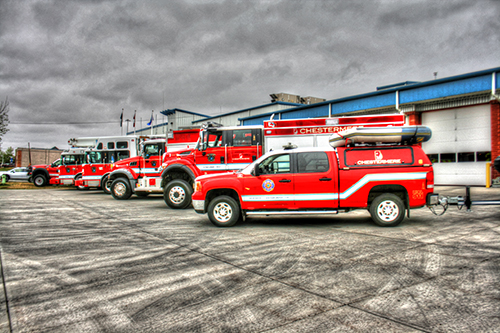Our identity is an important part of our contribution to the rest of the world. It is a compilation of the things that make us unique. A lot of these pieces have evolved and changed over time. However, some parts of my identity have remained constant, playing a massive role in my life. As someone who has always identified as a woman, it has become a central part of who I am and how I see myself fitting into the rest of the world. When you think of the word ‘woman,’ you can associate that with strength, resilience, and compassion. However, it is essential to remember the inequities that are related to being a woman as well.
As International Women’s Day has just passed, we should be aware of the gender gaps and inequalities present in our society and look for thoughtful ways to eliminate them no matter how small it may be. Every individual deserves to be accepted as the way they are and whatever contribution they can make to their community. Unfortunately, women face many discrepancies that influence the way they can contribute. For example, receiving an education for many females worldwide is highly challenging (Clisby & Holdsworth, 2014), but continuing it may be even more difficult as women face multiple social barriers that can discourage them.
Obtaining employment also comes with many challenges. Different professions that have historically been labelled as jobs appropriate for men are very difficult to join. For example, politics, engineering, higher-level medicine, law, and countless other professions were not available for women to join. The gender gap between these jobs has decreased as society moves forward, but women still face many barriers (Fox & Moyser, 2018). In fact, the usual assumption is that men still make up the majority in these professions.
In professions where women, against the odds, can gain employment, they are severely under-represented in management roles (Hick & Stokes, 2017). In fact, since 1987, men have been two to three times more likely to hold a senior management position versus women. Women also make up most of the part-time or temporary workforce, which are much more vulnerable positions to be in when there are recessions or other economic downturns (Hick & Stokes, 2017). Due to women making up most of the workforce that is paid minimum wage, they are in need of legislation that secures their wages and possibly getting to a minimum wage that provides a decent living. Furthermore, parental leave brings up important unanswered questions when individuals start a family. Supporting anyone who wants to stay home and support their child should be encouraged. While mothers are more likely to take on this role, there has been a continuing shift in increasing paternity leave (Statistics Canada, 2021a). After periods of leave, children still need support from their caregivers. Canada’s lack of universal child care makes it harder for women to contribute more to their careers (Hick & Stokes, 2017). Recently, Alberta has provided additional funding to help support with childcare over the course of four years, which can help increase the affordability to access these resources for parents (Government of Alberta, 2021). This is a great resource to help support families become more financially secure and encourage economic recovery in Alberta.
Other barriers faced by women in the workforce are harassment, less leisure time, more unpaid work, lack of recognition, lack of promotions, disproportionate share of housework, childcare and eldercare, and overall less support (Statistics Canada, 2021b; Moyser & Burlock, 2018; Fox & Moyser, 2018). This can become very dispiriting for women trying to push through the difficulties of even getting employment and progressing professionally. Women have always been questioned due to gender norms that serve women as more helpful in the lower-level or administrative positions (Fox & Moyser, 2018).
These are just some of the problems women face every day. Our entire society today was built upon a patriarchal lens that has always favoured men. Patriarchy can be literally defined as ‘rule by the father,’ a system made for men and their interests (Hick & Stokes, 2017). And although we seem like we are much further along than in the 1960s when women were fighting for equal civil rights and the ability to contribute more to the workforce (Fox & Moyser, 2018), we still have a lot of work to do to make the world a genuinely equal, inclusive, and welcoming space.
So the big question is, how do we help? Or, what does help look like? Gender equality would look like any individual, no matter how they identify themselves, living together in a society that offers equal opportunity, allows them to contribute as equal citizens in national, political, social, economic, and cultural development and to benefit from these contributions (Hick & Stokes, 2017). This can be as easy as ensuring pay is comparable in your organization. Having conversations around wage gaps can open conversations to changing it as well.
Furthermore, creating equal opportunity for everyone to contribute. Human beings come in all different shapes, sizes, and experiences. Providing equal opportunities to participate in upcoming projects or programs can allow individuals to feel like they have a voice. This can allow individuals to contribute in different ways, whether that’s vocally or sending in ideas virtually.
Finally, providing support and encouragement. A lot of women suffer from feeling like they are not able to effectively do specific work because society has created gendered boxes of what is appropriate and what is not. Sometimes all someone needs is for someone else to believe in them. This can be as little as providing verbal encouragement to providing individuals with a physical opportunity to contribute their work and opinions. However, this can also look like speaking up when you see a problem with how someone is being treated. Advocating for someone can go a long way when we are mindful of how people are treated around us.
The most important consideration is that we continue to support, empower, and celebrate the women in our community every day. I want to finish by acknowledging that supporting one group does not mean you need to scrutinize another. It requires finding harmony and balance of resources and space for everyone to have their presence feel like it is valued.
References
- Clisby, S. & Holdsworth, J. (2014). Gendering women: identity and mental wellbeing through the lifecourse. Bristol, England ; Chicago, Illinois : PP.
- Fox, D. & Moyser, M. (2018, May 16) Women in Canada: A Gender-based Statistical Report
- The Economic Well-Being of Women in Canada. Statistics Canada. Government of Canada. https://www150.statcan.gc.ca/n1/pub/89-503-x/2015001/article/54930-eng.htm
- Government of Alberta. (2021) Changes to Alberta’s child care system. https://www.alberta.ca/changes-to-albertas-child-care-system.aspx
- Hick, S., & Stokes, J. (2017). Social work in Canada: An introduction (4th ed.). ThompsonEducationalPublishing, Inc.
- Moyser, M. & Burlock, A. (2018, July 30). Time use: Total work burden, unpaid work, and leisure. Statistics Canada. Government of Canada. https://www150.statcan.gc.ca/n1/pub/89-503-x/2015001/article/54931-eng.htm
- Statistics Canada. (2021, February 10a). Study: Family matters: Parental leave in Canada. Government of Canada. https://www150.statcan.gc.ca/n1/en/daily-quotidien/210210/dq210210a-eng.pdf?st=OWAvdBUZ
- Statistics Canada. (2021, August 12b) In 2020, one in four women and one in six men reported having experienced inappropriate sexualized behaviours at work in the previous year. Government of Canada. https://www150.statcan.gc.ca/n1/daily-quotidien/210812/dq210812b-eng.htm
- :







